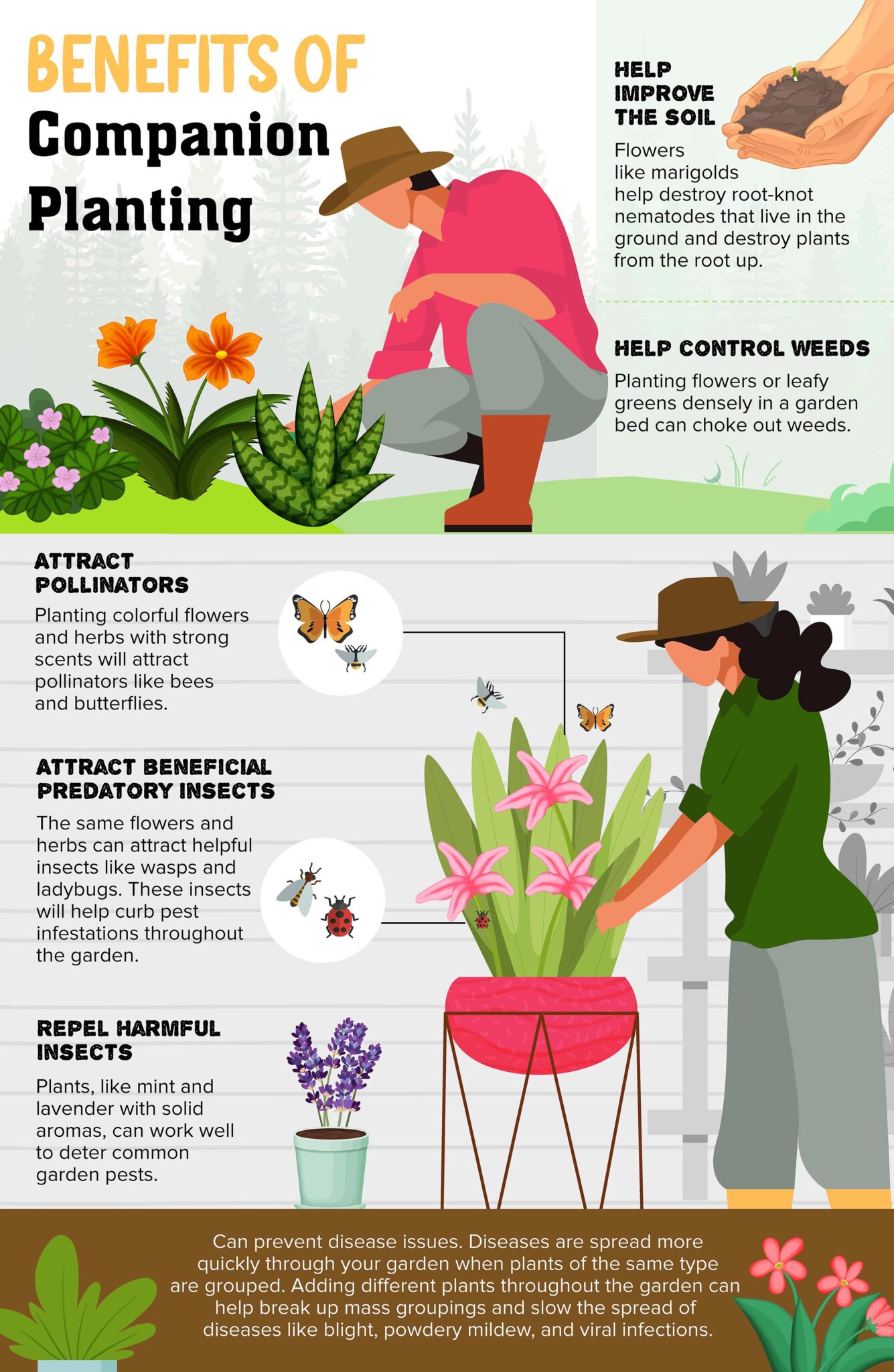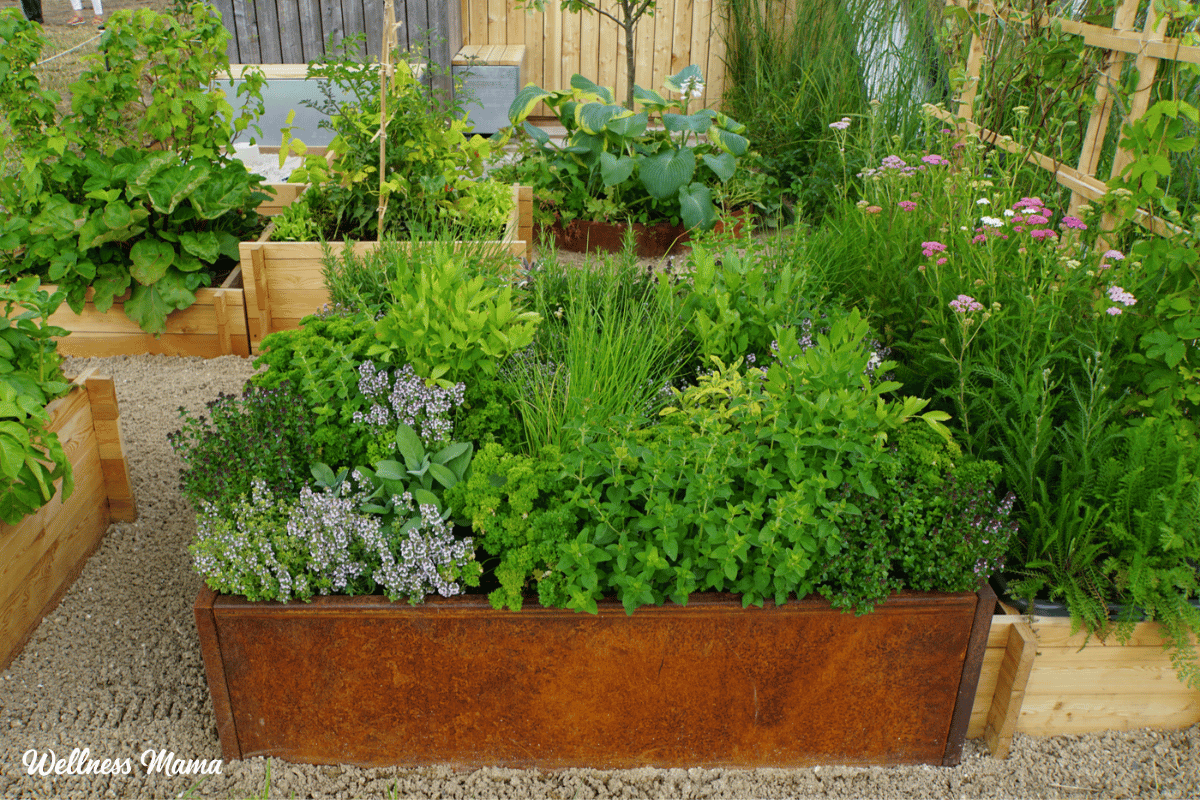Companion Planting Guide: The
Companion Planting Guide: The Ultimate Guide to Growing Healthy and Productive Plants
Companion planting is a gardening practice that involves planting different types of plants together in order to benefit each other. By carefully choosing which plants to grow near each other, you can improve the health, growth, and productivity of your garden.
There are many different benefits to companion planting. Some of the most common include:
- Attracting beneficial insects and repelling pests. Many plants have natural insecticidal properties, and planting them near other plants can help to deter pests. For example, marigolds are known to repel aphids, and nasturtiums attract ladybugs, which eat aphids.
- Improving pollination. Some plants, such as tomatoes and peppers, need help from pollinators in order to produce fruit. By planting these plants near flowers that attract bees and other pollinators, you can improve their chances of pollination.
- Completing the nitrogen cycle. Legumes, such as peas and beans, are able to fix nitrogen from the air, making it available to other plants in the soil. By planting legumes near other plants, you can help to improve the overall nitrogen content of your soil.
- Providing shade and shelter. Some plants, such as lettuce and spinach, can be sensitive to the sun. By planting them near taller plants, such as corn or tomatoes, you can provide them with some shade and protection from the wind.
- Distracting pests. Some plants, such as basil and mint, have strong scents that can distract pests from other plants in the garden. This can be a helpful way to protect your crops from insect damage.
If you're interested in trying companion planting, there are a few things you need to keep in mind. First, it's important to do your research and learn about the different plants that you want to grow. Some plants are incompatible with each other, so it's important to avoid planting them together.
Once you know which plants you want to grow, you can start planning your garden layout. When choosing companion plants, it's important to consider their different needs in terms of sunlight, water, and soil conditions. You also need to think about the size of the plants and how they will grow. For example, you wouldn't want to plant a tall plant like corn next to a short plant like lettuce, as the corn would eventually shade out the lettuce.
Once you have a plan for your garden layout, you can start planting your seeds or seedlings. Be sure to label your plants so that you know which ones are companion plants.
Companion planting can be a great way to improve the health and productivity of your garden. By carefully choosing which plants to grow together, you can create a more balanced and harmonious ecosystem that will benefit all of your plants.
Companion planting is a gardening technique that uses the relationships between different plants to create a more productive and pest-resistant garden. By planting certain plants together, you can attract beneficial insects, deter pests, and improve the overall health of your plants.
If you're new to companion planting, or you want to learn more about the best plant combinations, I recommend visiting Gardenia Inspiration. This website has a comprehensive companion planting guide that includes information on over 100 different plants. You can also find helpful articles on topics such as how to plant companion plants, how to space them properly, and how to troubleshoot common problems.
Visit Gardenia Inspiration today to learn more about companion planting and how you can use it to improve your garden.
FAQ of companion gardening guide
- What is companion planting?
Companion planting is a gardening technique that uses the relationships between different plants to create a more productive and pest-resistant garden. By planting certain plants together, you can help to attract beneficial insects, deter pests, and improve the overall health of your plants.
- What are the benefits of companion planting?
There are many benefits to companion planting, including:
- Increased yields: Companion planting can help to increase the yields of your crops by attracting beneficial insects, deterring pests, and improving soil health.
- Reduced pest problems: Companion planting can help to reduce pest problems by attracting beneficial insects that prey on pests, or by planting plants that deter pests.
- Improved plant health: Companion planting can help to improve plant health by providing shade, windbreak, or other beneficial conditions.
- Enhanced biodiversity: Companion planting can help to enhance biodiversity in your garden by providing food and shelter for a variety of beneficial insects and animals.
- What are some common companion plants?
There are many common companion plants, but some of the most popular include:
- Marigolds: Marigolds are a popular companion plant for many vegetables, as they help to repel pests such as aphids, beetles, and nematodes.
- Nasturtiums: Nasturtiums are another popular companion plant, as they help to deter pests such as aphids, cabbage worms, and flea beetles.
- Potatoes: Potatoes can be planted with mint to help repel pests such as potato beetles and ants.
- Tomatoes: Tomatoes can be planted with basil to help attract beneficial insects such as ladybugs and hoverflies, which prey on pests.
- Carrots: Carrots can be planted with onions to help repel carrot flies.
- How do I find out which plants are good companion plants?
There are many resources available to help you find out which plants are good companion plants. One of the best resources is a companion planting chart. Companion planting charts list different plants and their companion plants. You can find companion planting charts online or in gardening books.
- How do I plant companion plants?
When planting companion plants, it is important to consider the size and growth habit of each plant. You want to make sure that the plants you are planting will not outgrow each other or compete for resources. You should also plant companion plants in a way that will help them to complement each other's benefits. For example, you might plant marigolds around your vegetable garden to help repel pests, and then plant nasturtiums in between the vegetables to help attract beneficial insects.
Image of companion gardening guide
- Image 1: A colorful infographic that shows different companion plants and their benefits. For example, tomatoes and basil are good companions because they repel each other's pests.

- Image 2: A photo of a garden bed with different companion plants arranged in a grid pattern. The caption of the photo explains that this pattern helps to maximize the benefits of companion planting.

- Image 3: A diagram of a vegetable garden with different companion plants labeled. The diagram also shows how the plants can help each other, such as by attracting pollinators or deterring pests.

- Image 4: A book titled "The Vegetable Gardener's Companion" by Louise Riotte. This book is a comprehensive guide to companion planting, with information on different plants, their benefits, and how to use them in your garden.

- Image 5: A website called "Gardening Know How" with a section on companion planting. This website has articles, videos, and a plant database that can help you learn more about companion planting.

Post a Comment for "Companion Planting Guide: The"